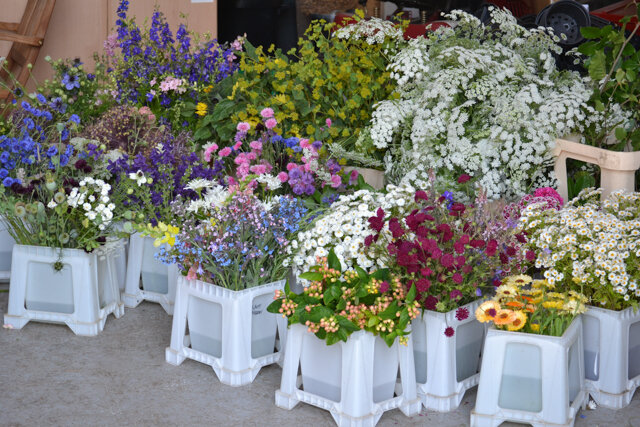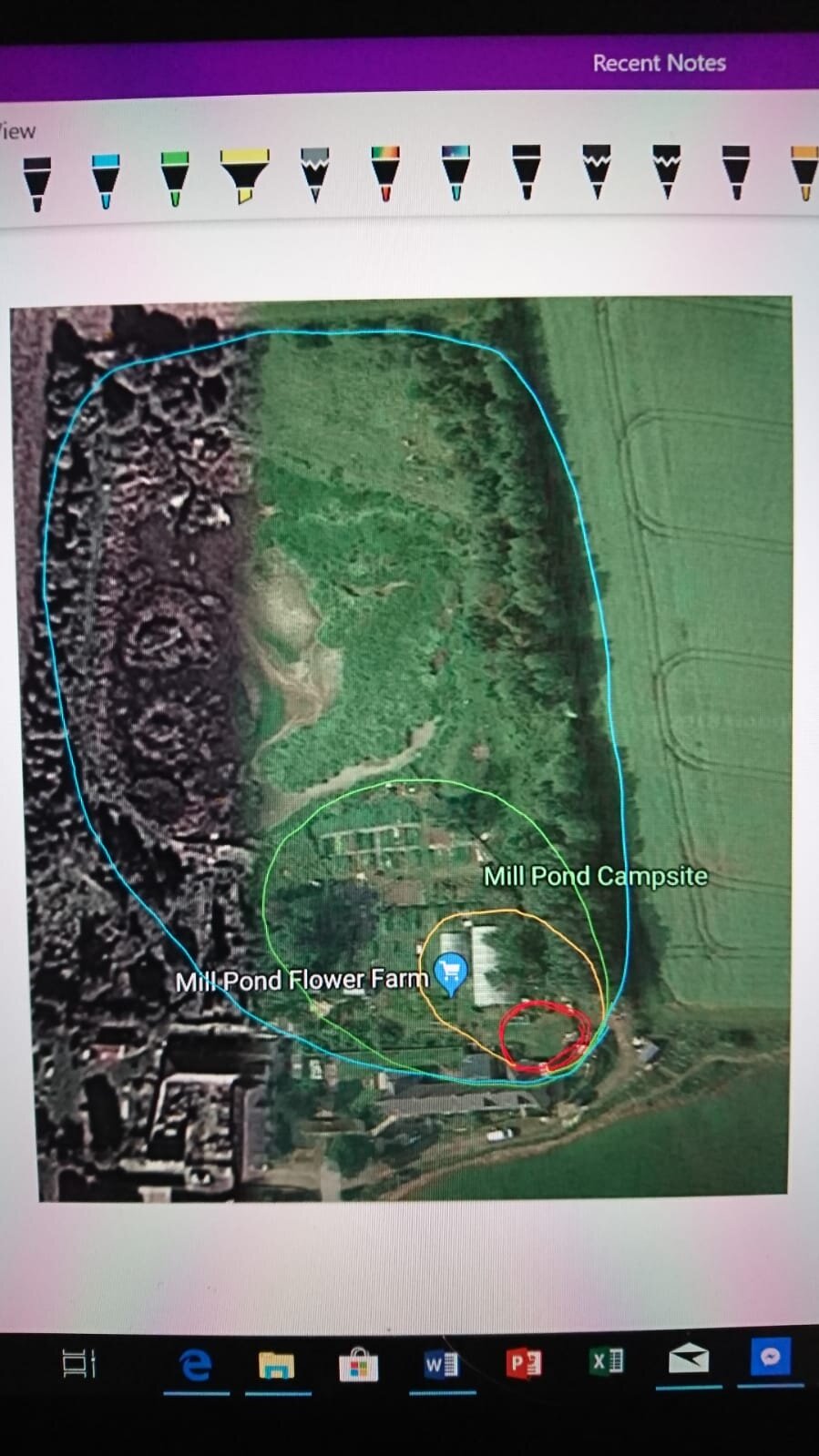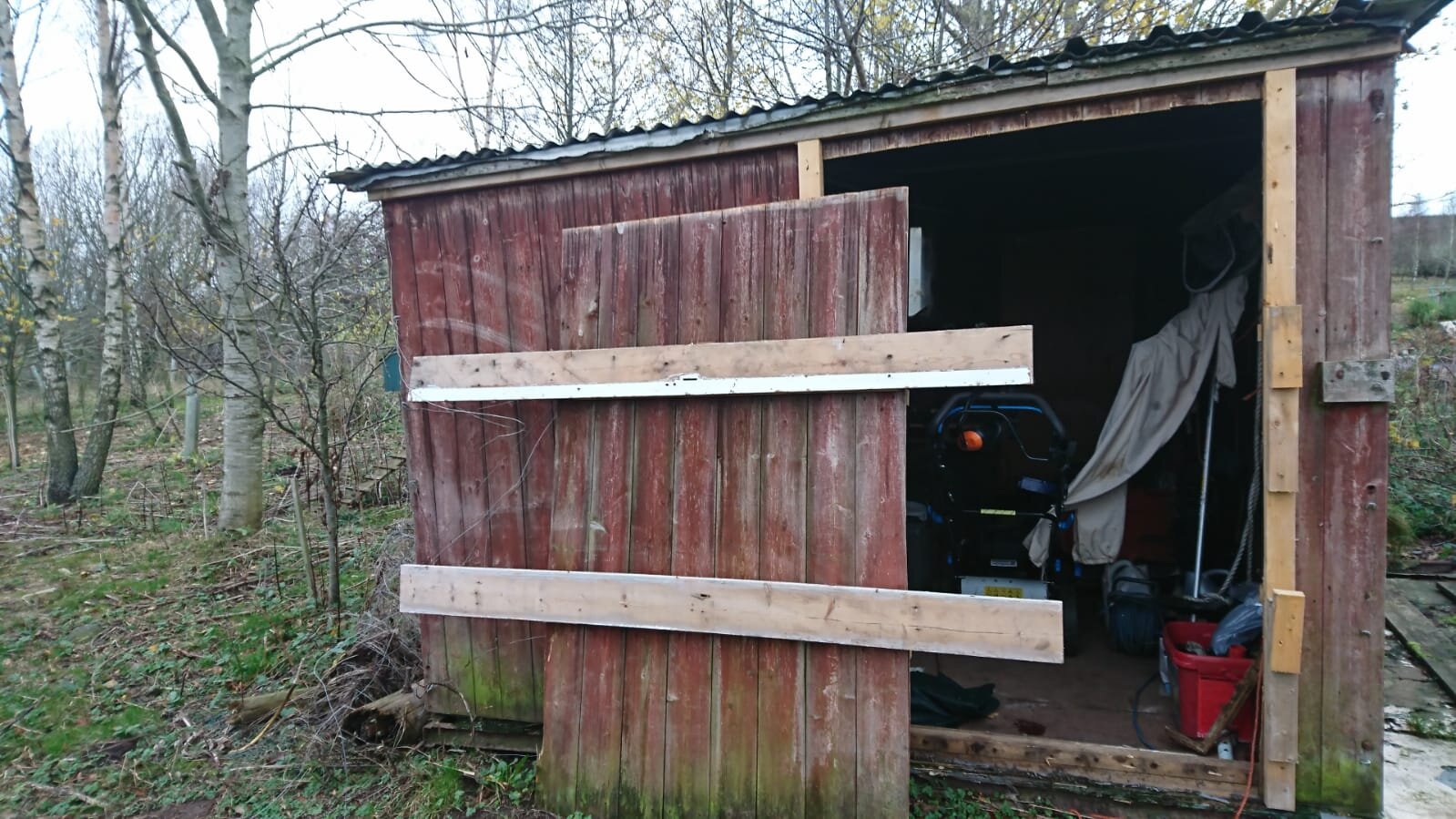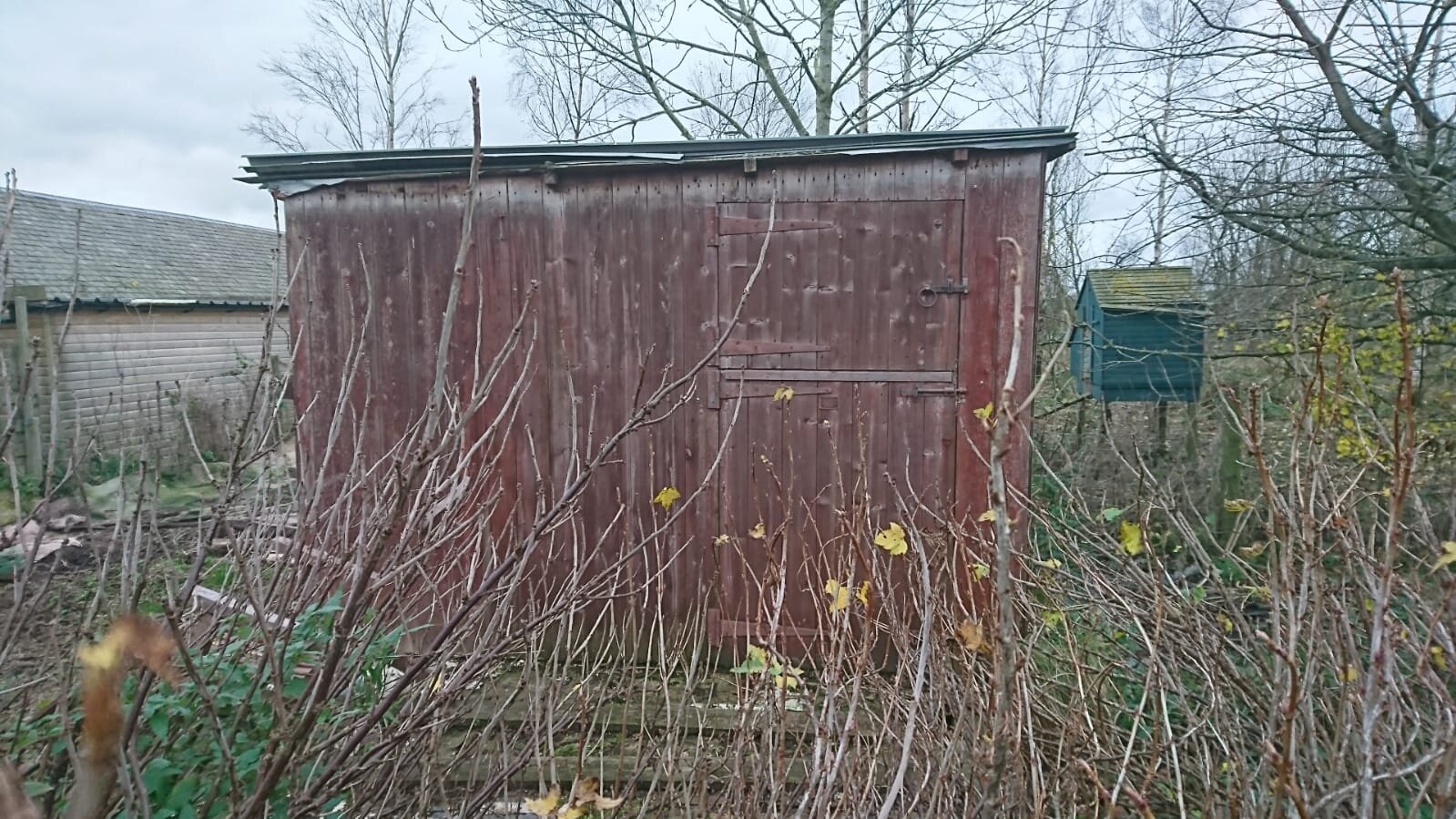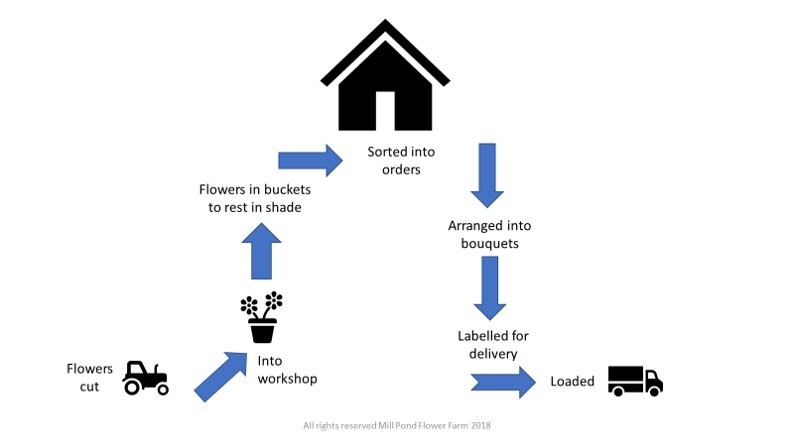Planning your Plot Layout in Detail
Paula, Mill Pond Flower Farm
Step back to see clearly: Get an overview of your plot
The last module on Market Planning looked at getting the right customers for our crops, so the next step would logically seem to be growing more to increase income and profit. The assumption would be that to increase our output, we need more inputs. We can all grow more flowers and foliage if we have enough time, land and investment. Right?
Well, maybe. But before we look at increasing our efforts, we’re going to spend some time looking at how we might be able to do things differently and grow more with less effort.
A few years ago, Carol, Claire and myself got together to share ideas, experiences and learn from each other. We were at similar stages in our business development and the options for professional development were limited in the UK at that time, so we decided to create our own. One of the themes we kept coming back to was how we could make the most of what we already had, to cut down on waste and get the most from our efforts. We all want to have good lives as well as good businesses, so increased efficiency and productivity have been essential elements of our development over the past few years.
Applying the LEAN approach to growing flowers
We’ve all been employed in other industries and have learned a lot from different approaches to working. We’ve taken elements of LEAN principles and applied them to our flower farms, working on developing efficient mindsets and critical thinking in what we do. Working together is part of that approach as it allows us to compare and contrast working practices across our farms, look in detail, learn from each other, develop our own tools and methods and try things out in a supportive environment. There are lots of resources on LEAN ways of working in manufacturing and business, but the most useful one for flower growing is ‘The Lean Farm’ book by Ben Hartnett. It won’t give you a blueprint for an efficient flower farm, but it will give you a lot to think about!
Step back to see clearly: getting an overview of your plot
How effectively do you use your land?
Does it matter?
Those of you who grow on restricted space will be nodding much more emphatically than those who have plenty of land, but it’s important for all of us to look at how we utilise what we have and to be efficient in our growing.
Carol’s site: before starting, with first field, and then with second field added
Carol grows on around two acres of land that was previously used by the neighbouring farmer. Her main flower field was the area that he used to turn his tractor around and fed the cows. The foliage field was a strip at the edge of a grazing field that was difficult for them to maintain as it was narrow and edged by trees and a fence - the spray contractors couldn’t even get the boom properly flat on the sprayer. It was also mainly used as a cattle feeding station. The farmer probably thought that he was making good use of all his land, when in fact he was overlooking the potential of a piece of it that now provides a significant income.
We all have neglected areas and places in our plots that could be more productive. Planning your plot in detail can help to identify these areas and reduce weedy, wasted ground that could be providing an income for you. The easiest and most accurate way to survey your plot is to get an aerial view of it and there are a few ways to get hold of this information:
Google Earth – every few years satellite images are uploaded for public viewing and are available online. Find your plot!!
Drone photos – if you have a friend, relative, neighbour or local drone enthusiast, ask them to come and take an aerial photo of your plot
Aircraft or microlight enthusiasts
Land Registry or Holding information – maps and aerial images are often used when registering land ownership Once you have an image, then overlay it with your plot layout and LOOK
It’s fascinating and a totally different way of seeing the paths you walk every day.
Mill Pond Flower Farm annotated plan
The image shows Mill Pond Flower Farm from above, with beds marked, buildings and tunnels identified, fences highlighted. The rainbow areas are the places that are not properly under cultivation and are therefore wasted ground – currently weedy and inaccessible. Although we have more land that we could expand into, that would mean moving fences (again!) and would create longer journeys to cultivate and harvest crops. Our priority is to have ALL our land at full production before even thinking about expanding our intensive growing area.
Using the Bullseye model
A very simple approach to planning a flower farm is to use the Bullseye model. It suggests a priority-based, ease of use approach that physically moves from a central point.
The centre is the most used area where items are delivered to and dispatched from. Where services are delivered and access to the site is gained.The next ring is the cossetting area, where things are placed that need looking after on a regular basis. Propagation, seedling care, any heated or cooled space would fit within this area. You’ll be passing through it regularly so will notice if attention is required.
The rings moving outwards would contain crops and plants that need progressively less attention, moving through annuals, perennials, shrubs and trees.
Again, it’s a common sense approach that works on the needs of the plants – if they need more time and effort, they need to be closer to the centre. It means that we concentrate on the central areas, saving time and energy moving backwards and forwards from the outside to the centre.
For example, dahlias need a lot of attention. They will be delivered to the centre, potted and cared for in zone 1, planted out in zone 2 or 3, dug up and stored in the centre where they need shelter/heat to survive the winter and regular checks.
Tree foliage needs little attention once planted, it can be left to grow most of the year and then just needs to be brought into the centre once harvested.
I grow most of my bulbs under trees at the edge of our land. Once planted they need little attention and are harvested during a fairly short window of time. Although it’s more effort to cut and move the flowers, it’s only for a few weeks and most of the bulbs are in the same area so harvesting is concentrated in that place.
How big do you want to be - how much land is enough?
When you think of "Farming" most people think of acres of fields. Mainly because most agricultural systems use giant monocultured fields. Larger fields will need machinery to do the harvesting, or teams of pickers that all need to be concentrated in an area at one time.
However flower farming doesn't need to be on a huge scale to be productive and profitable.
All 3 of us farm our flowers on less than 2 acres of productive ground.
We use beds that are a lot smaller than full fields of crops, and we can produce a huge number of stems from them.
Our bed sizes are between 4 and 10 square meters.
So when you're planning your plants, you need to be thinking in terms of:
How many plants per square metre (Go back to Carol's information in Module 2 Planning Quantities)
Who are your customers and so what type of crops will you be growing (Go back to Claire's information in Module 2, What do they want to buy)
What is your balance of priorities with regards to how often you can harvest (Go back to Paula's information in Module 2 Getting the balance right)
In Module 7 We are going to look in detail about keeping records, so you'll have numbers from your own soil and conditions, but to give you an idea:
A 10 metre bed of Achillea (90-100 plants) can give 400 stems of flowers per week for 4 weeks over July and August. If then cut back hard it will have a second flush producing 30-50 stems a week for 3 weeks in September/ October.
A 10 metre overwintered bed of Ammi Visnaga can give 300 stems of flowers per week for 3 weeks in late June and July. A 10metre spring sown bed of Ammi Visnaga can give a 150 stems, slightly shorter for 3 weeks in September.
If you are unable to harvest every day, then you'll also need crops that don't spoil if you don't pick them immediately. These are our best and most productive crops that don't have to be picked every day of the week:
Carol : Achillea, Astrantia, Daucus, Eucalyptus, Nepeta
Paula : Rosemary, Privet, Roses, Lupins, Senecio
Claire : Mint, Astrantia, Rosemary, Stachys, Hydrangea Annabelle, Dusty miller
Beds and rows – does size matter?
Beds and Paths
The way that flower growing is organised is all about the flower farmer. Plants will grow anyway, if they are given the right conditions. To cultivate and harvest them requires access from people and /or machinery, so the way they are planted should work best for the people who are working with them.
Does size matter?
When planning your field layout consider the following:
1. Any machinery or equipment that needs to access the plot
If you are using mechanical help to cultivate the ground or move resources and harvested flowers around your plot then you’ll need to make sure that the machines can get in, move along and turn around without damaging your plants. Paths will need to be at least the width of the machine. If you’re using a rotavator, your beds will need to be probably twice the width of the rotavator to allow for turning without damaging the paths.
You may decide to plough your whole field and start from dirt paths each season if you grow only annuals.
2. How you will cultivate, plant and harvest your crops?
If you’re working on a hand scale, it’s important that you can easily reach in to the centre of any bed to plant, weed and harvest flowers. If you’re using mechanised planting, weeding or harvesting the beds will have to accommodate the machinery.
3. The mature size of the plants
Large plants will need more space around them so will need planting that allows growth and harvesting!
These deutzia shrubs were planted 2 years ago at 20cms high!
This might all seem totally common sense, but most plots evolve over a number of seasons and you can get to a point where it’s just not working.
My husband has a tractor, an old grey Fergie, that he loves using with a plough belonging to our neighbour. When we expanded the flower field out of our garden into a new area, he ploughed the field into strips that fit the size and shape of both the tractor and the field. It seemed like a good idea, but it didn’t work well for me at all. The beds were too wide so I had to step into them all the time. They were too long – 10 metres - so I was forever jumping across half way up until the plants were too tall to allow that, and then I had to walk up the slope of the beds and back around to the other side. The ploughed earth was lumpy and weedy and needed a lot of work to get it to a stage where I could plant into. The paths were a tractor width and needed mowing every week. It was very hard work!
When we moved the flower field again (yes, please don’t follow my example) I did it differently. I used an aerial plan, measured out blocks of flower beds and covered them with black plastic sheeting in the autumn. By the Spring the ground was clear of grass and once the docks were removed, it was ready to plant into. In Module 2, Carol wrote about planning how many plants to fit in to a space, depending on the varieties but deliberately didn’t specify an optimal bed size because it’s all about how you work. Within each large block, our flowers beds are all 1m x 4m. I know how many of each variety I can plant into each bed, fleece and enviromesh are all cut to that size. They are easy to plant into, cultivate and harvest from. I don’t even have to think about it, and that space in my head is filled with other more useful things.
Paths
We shouldn’t have to think about paths if they are right. We should take them totally for granted. We should be spending all our time on the things that make a difference to our customers – gorgeous flowers and foliage and fantastic customer service.
A lot of the photos of flower fields in general use show neatly mowed grass paths with beautiful beds of flowers, all very idyllic. If you have a business that includes cut your own flowers you may want to maintain pretty paths for your customers. If one of the questions we ask before we do a task is ‘Will this make a difference to my customer?’ then the answer in this case would be yes. Grass is soft, kind on the feet and looks lovely. It might be worth the additional effort and maintenance in this instance.
However, if you’re growing flowers for other markets, paths should be functional, easy and cheap to maintain and safe to walk along. They should be as wide as you need to get access and work comfortably but as narrow as possible to prioritise land for growing, so that the majority of your land is used for the crops that will sustain your business.
At Mill Pond Flower Farm, we’ve been moving away from grass towards landscape fabric paths for the past couple of years. Although it’s plastic, it is long lasting, and cheaper and easier on the environment in the long term than using petrol in a lawnmower every week in the summer. Our paths are mainly 1m wide, with a couple of 2m wide to allow for turning and for the big tractor to cross the field to the other side of the pond.
When we were planning the field, we had a garden mower that we used for pulling a trailer/collecting/moving so the paths were made to fit the mower, with added turning space. When it completely broke and I replaced it with a quad bike to do the same tasks, the first thing I wanted to know was if it would fit along the paths. Once that essential criteria was satisfied we could consider other things such as did it start every time (a big step forward) and could we afford it? More on that when we look at tools!
At Plantpassion, Claire started with lovely wide grass paths, - they look great, until you realise they needed an average of 3 hours a week mowing.
looked lovely, but sooooo unproductive
Now, unsurprisingly, there is a lot less grass, smaller paths between most of the growing beds (with larger wider paths for access), and a lot more productive growing space
Annual beds with woodchip paths.
Making buildings work
It’s good to have some indoor space for storage and working under cover. In particular, it’s essential to have a space under cover out of the sun to put flowers in once cut.
However, we don’t often get to choose which buildings we have as part of our flower farm, they are an expensive and permanent feature and often are already in place. Making them work can often be a challenge.
We have had a shed on our plot for a number of years that’s been empty. Birds have nested in it every year and there were a few discarded tools in it but little else. The problem with it was the door which faced directly out onto our fruit bushes and was inaccessible with the trolley or quad. We discussed demolishing it but that seemed crazy. Then we had to clear our workshop space to lay a concrete floor and were desperate for storage, so Ray took a saw and cut a door in the side of the shed. And suddenly we have a functional and busy space! It’s in full use and has freed up other areas. The ‘door’ still needs some tweaking but what a difference.
While I wouldn’t generally advocate taking a power tool to your buildings, think carefully about what issues make them less useful and see if you can solve them simply and cheaply. If a building gets too hot, try painting it with heat reflective paint and insulating it. Vents at the bottom and top can create air flow that cools the interior. Screens and blinds can help, as can growing climbers up the walls to absorb the heat and cool the structure.
Inside your buildings, think about the FLOW of your work.
Where do things go to and from?
Can you create a logical movement to your actions?
Workshop flow
Things that can help FLOW
Try to separate clean and dirty activities and wet and dry areas
Remove steps as much as you can and replace with slopes or ramps
Banish obstacles and get everything off the floor
Avoid having people doing tasks crossing paths
“Question: Are there any ways that you can improve the flow of work in your buildings?”






